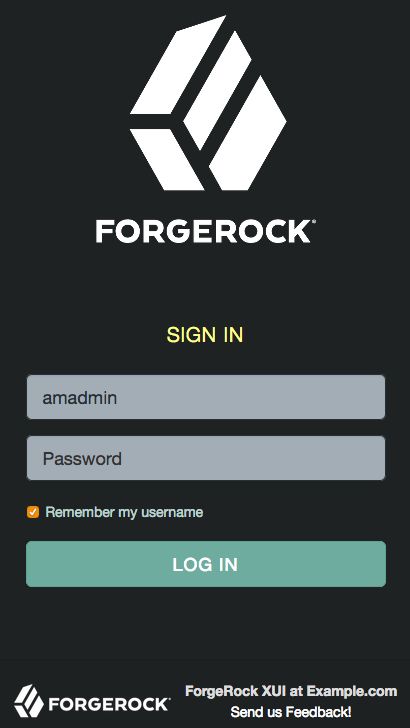Customizing the UI Layout
To perform basic customizations, edit the openam-ui-user/src/js/config/ThemeConfiguration.js and then rebuild the UI.
The file contains a full configuration for the mandatory default theme. Additional themes should use a duplicate of the default theme's configuration. Any parameters that are not configured will inherit values from the mandatory default theme.
The available parameters for each theme in the file are as follows:
themes: Title; also represents an array of theme objects.name: Theme title.
stylesheets: An ordered array of URLs to CSS stylesheet files that are applied to every page. It is highly recommended to include the variableStructureStyleas one of the entries to provide default styles for layout and structure.For example:
["themes/dark/css/bootstrap.min.css", StructureStyle, "themes/dark/css/theme-dark.css"]path: A path relative to theopenam-ui-user/src/resources/themesfolder, that containstemplatesorpartialsdirectories, used for customizing the default layout of UI pages. The path must include a trailing slash character /.For example,
["theme-path/"].icon: URL to a resource to use as a favicon.settings: Configuration settings for the theme. Missing parameters inherit their value from the mandatorydefaulttheme.logo: Parameters for the logo displayed on user profile pages.src: Filename of the logo.title: HTMLtitleattribute of the logo.alt: HTMLaltattribute of the logo.height: Logo height in CSS notation. For example:75pxor10%.width: Logo width in CSS notation. For example:150pxor25%.
loginLogo: Parameters for the logo displayed on login pages.src: Filename of the logo.title: HTMLtitleattribute of the logo.alt: HTMLaltattribute of the logo.height: Logo height in CSS notation. For example:75pxor10%.width: Logo width in CSS notation. For example:150pxor25%.
footer: Parameters to display in the footer of each UI page.mailto: Email address.phone: Telephone number.
